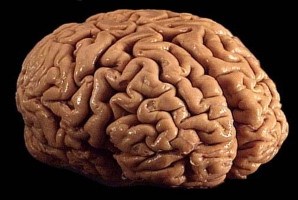
A study led by Nicolas Bazan, MD, PhD, Boyd Professor and Director of LSU Health New Orleans Neuroscience Center of Excellence, reports that in an experimental model of glioblastoma multiforme (GBM), a combination of approved and novel therapeutics improved survival and reduced tumour volume and growth.
Results are published online in Frontiers in Pharmacology. A commentary in Cancer and Metastasis Reviews, a Nature journal, highlights the conceptual advancement and therapeutic implications of these discoveries.
The research team tested three therapeutics, alone and in combination -- Avastin, a monoclonal antibody that inhibits the growth of new blood vessels approved in 2008 to treat GBM, LAU-0901, a synthetic molecule that blocks pro-inflammatory platelet-activating factor, and Elovanoids, a novel class of lipid mediators or bioactive chemical messengers that are released in response to cell injury or when cells are confronted with adversities for survival. Dr. Bazan’s lab discovered both LAU-0901 and Elovanoids.
“We have shown here that in combination, LAU-0901/Avastin, ELV/LAU-0901, or ELV/Avastin had a synergistic effect in decreasing tumour growth by 69, 79, and 89%, respectively,” says Bazan.
“We concluded that LAU-0901 and ELV combined with Avastin exert a more potent inhibition of glioblastoma multiforme progression than monotherapy.
To our knowledge, this is the first study that demonstrates the efficacy of these novel therapeutic regimens in a model of glioblastoma multiforme and may provide the basis for future therapeutics in patients with GBM.”
This new treatment approach targets not only angiogenesis (the formation of new blood vessels) but inflammation and oxidative stress. All three are actively involved in the development and progression of this deadly cancer.
According to the National Cancer Institute, glioblastoma multiforme is a fast-growing type of central nervous system tumour that forms from glial (supportive) tissue of the brain and spinal cord and has cells that look very different from normal cells. Glioblastoma multiforme usually occurs in adults and affects the brain more often than the spinal cord.
Notes co-author Ludmila Belayev, MD, LSU Health New Orleans Professor of Neurosurgery, Neurology and Neuroscience, “Glioblastoma multiforme has a poor prognosis and low survival rate.
The current standard of care for GBM is chemotherapy combined with radiation following surgical intervention, altogether with limited efficacy, since survival averages 18 months.”
“The development of effective GBM therapy presents several challenges,” Bazan explains.
“These tumours are not only genetically unstable but can differ among patients and also contain different cancer cells within the same tumour.
A multipronged approach that targets key signalling pathways, specifically angiogenesis, inflammation, and oxidative stress pathways, may open new therapeutic avenues. Our results showing that LAU-0901 and ELV increase the effectiveness of Avastin offer a strategy that may ultimately improve clinical outcomes in patients with GBM.”
The research team also included Drs. Valerie A. Cruz Flores, Hemant Menghani, Pranab K. Mukherjee, Luis Marrero, Larissa Khoutorova, Madigan M. Reid, and Ludmila Belayev at LSU Health New Orleans’ Neuroscience Center of Excellence, as well as Drs. Andre Obenaus and Quan Dang at the University of California Irvin, Irvine.
We are an independent charity and are not backed by a large company or society. We raise every penny ourselves to improve the standards of cancer care through education. You can help us continue our work to address inequalities in cancer care by making a donation.
Any donation, however small, contributes directly towards the costs of creating and sharing free oncology education.
Together we can get better outcomes for patients by tackling global inequalities in access to the results of cancer research.
Thank you for your support.